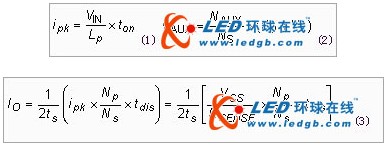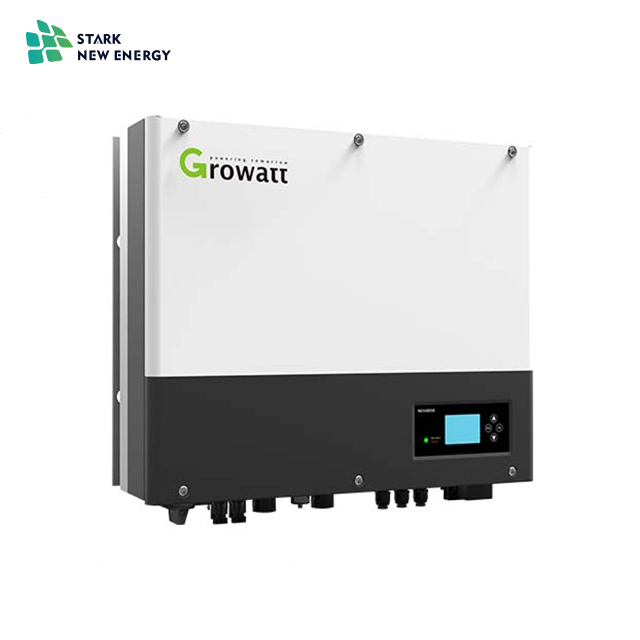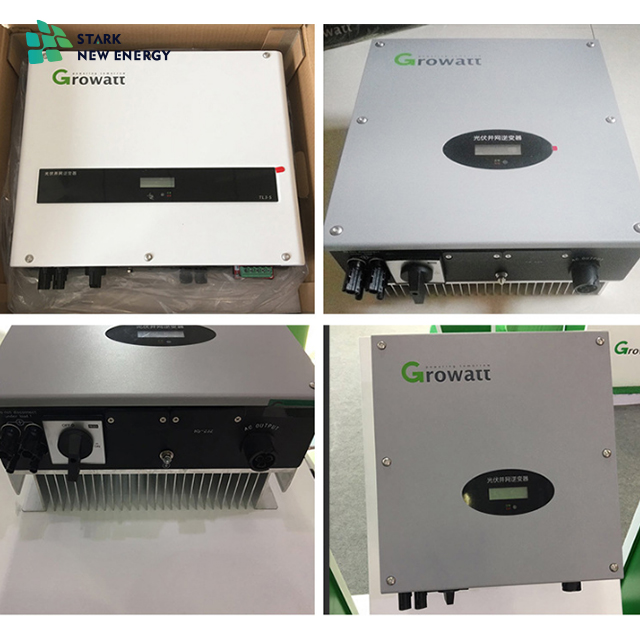The global focus on low-power and high-efficiency technologies continues. As lighting applications account for nearly 20% of the world's power consumption, advances in lighting technology can have a huge impact on energy conditions. LED solid state lighting (SSL) is an environmentally friendly technology with excellent form factor, long life, high conversion efficiency, and power consumption 80% or 90% lower than traditional incandescent bulbs. In LEDSSL, The LED driver plays an important role because it relies on it to provide the exact current needed to maintain a steady brightness. However, conventional LED driver solutions use secondary feedback circuits to drive the voltage and current of the LEDs, while secondary feedback circuits result in increased cost and size. This article will introduce a patented "Primary Side Regulation" (PSR). This PSR controller eliminates the need for a secondary side feedback circuit that precisely adjusts the voltage and current of the LED driver in the primary side of the transformer. It also includes frequency jittering to reduce EMI and light-load standby mode to reduce standby loss. With this solution, the PSR charger can achieve smaller form factors, lower standby power consumption and higher efficiency than traditional designs such as Ringing Choke Converter (RCC) and conventional PWM.
LED lighting overview
Energy-saving green technologies are becoming more and more important due to imbalances in energy demand, increased energy costs, and global concerns about environmental issues. Energy consumption in lighting applications can be as high as 20%, so using innovative technologies to reduce energy waste has a major impact on energy efficiency. Energy efficiency regulations are becoming more common in all regions of the world. For example, the United States has Energy Star (ENERGYSTAR?), and Australia, the European Union and California have announced that they will phase out traditional lighting solutions.
The light-emitting diode (LED) is actually unidirectionally conductive like the rectifying diode. Unlike traditional lighting technology, SSL LEDs use semiconductors to convert electrical energy into light energy. The advantages of LED lighting over traditional technology are as follows:
1. The LED is driven by a DC voltage to maintain high brightness even under low voltage and low current conditions. In the same lighting application, LEDs can save up to 80% compared to other lighting solutions. High-brightness LEDs can last as long as 60,000 to 100,000 hours; incandescent bulbs are only 1,000 hours. In addition, the LED's response speed is very fast (100ns ~ 1ns).
2. The monochromaticity of the LED is good. Common colors include red, green, yellow and orange. Its color can be changed by changing the current, and unlike traditional cold cathode fluorescent lamps (CCFLs), LEDs do not contain ultraviolet and infrared radiation in the spectrum, and harmful mercury metal elements are also less, which is environmentally friendly.
3. LEDs are small in size, resistant to vibration, and have high impact resistance. They can also be made into various shapes in the bulb.
Compared with LEDs, spiral energy-saving bulbs and T5 fluorescent lamps, incandescent bulbs have an illumination efficiency of only 12 lm/W and a lifetime of less than 2,000 hours; spiral energy-saving bulbs have an illumination efficiency of 60 lm/W and have a lifespan of approximately 8,000 hours; while T5 bulbs have a lifetime of approximately 8,000 hours. The lighting efficiency is 96 lm / W, and the life expectancy is about 10,000 hours. The 5mm white LED has an illumination efficiency of 20 to 28 lm/W and a lifetime of approximately 100,000 hours. Clearly, LEDs have a longer life and more attractive features than traditional lighting applications. High-Brightness Light Emitting Diode (HBLED) is a high-power, high-brightness LED that has a longer life, smaller size, and flexible design. It has become a replacement for traditional incandescent bulbs and halogen lamps. . HBLED is generally used in the following applications:
1. Screen display and traffic lights: various billboards, sports scoreboards and traffic numbers.
2. Automotive lighting: dashboard indicators, audio and external LED brake lights, tail lights, side lights, etc.
3. Backlight: Backlighting of cell phones, digital cameras and notebooks.
4. Landscape lighting, architectural lighting, decorative lights, street lights and residential lighting.
As a new type of LED lighting source, HBLED is bound to become a new trend in the future.
High brightness LED driver with primary side regulation controller
As mentioned above, LED lighting has many advantages, but without proper voltage and accurate current, the life of these devices will not only be shortened, but also the power consumption and heat consumption will increase, which will eventually cause irreparable damage to the LED. Considering that the LED has the same sharp curve as the ordinary diode in terms of physical characteristics, the operating voltage of the LED is quite sensitive to the operating current. If it varies greatly, it will affect the life of the HB-LED unit. Therefore, the current of the LED is very important for illumination. In this case, the PSR with excellent constant current technology is both important and beneficial for the life of the HB-LED. LED drivers typically use a non-isolated buck converter or an isolated flyback converter.
In a conventional LED control circuit, an off-line constant output current LED driver can be implemented using an isolated flyback converter in conjunction with a secondary side circuit to regulate the output current, as shown in Figure 1. Here, the LED current is measured by a sense resistor Ro on the secondary side and provides the necessary feedback information by means of an optocoupler. The optocoupler forms isolation between the primary side and the secondary side and couples the feedback signal to the PWM controller on the primary side. In order to achieve better output regulation, the PWM controller uses the optocoupler to receive the feedback signal on the secondary side to determine the duty cycle of the MOSFET. This approach provides accurate current control, but the disadvantage is that the larger number of components means greater board space, higher cost, and lower reliability. At the same time, the sense resistor RO also increases power consumption and reduces the efficiency of the constant current regulated power supply. Recently, the efficiency and energy saving requirements of LED drivers have become more and more important, and LED applications have also required smaller sizes, so conventional circuits no longer meet the relevant requirements. This article describes a primary side control method that reduces the number of components and increases efficiency.

Primary Side Regulation (PSR) technology is the best solution to minimize the cost of off-line LED drivers, providing accurate current control without the need for optocouplers on the secondary side. The basic principle of PSR is to use an innovative method to replace the optocoupler on the secondary side with an auxiliary coil to detect the output information, as shown in Figure 2. Figure 2 shows the basic circuit diagram of a flyback converter with a primary side controller and its main operating waveforms.

When the PSR controller turns on the MOSFET, the transformer current iP will increase linearly from zero to ipk, as in equation (1). During conduction, energy is stored in the transformer. When the MOSFET is turned off (toff), the energy stored in the transformer is transferred to the output of the power converter by means of an output rectifier. During this period, the output voltage VO and the forward voltage VF of the diode are reflected to the auxiliary winding NAUX, and the voltage on the auxiliary winding NAUX can be expressed by the formula (2). A proprietary sampling technique can be used to sample the reflected voltage. Since the forward voltage of the output rectifier becomes constant, the associated output voltage information can be obtained. The sampled voltage is then compared to an accurate reference voltage to form a voltage loop that determines the MOSFET's turn-on time and accurately regulates the constant output voltage.
In this equation, LP is the inductance of the primary coil of the transformer; VIN is the input voltage of the transformer; ton is the on-time of the MOSFET; NAUX/NS is the turns ratio of the auxiliary coil to the secondary output coil; VO is the output voltage; VF Is the forward voltage of the output rectifier.
This sampling scheme also doubles the discharge time (tdis) of the transformer. As shown in Figure 2, the output current IO is related to the secondary side current of the transformer. IO can also be obtained using ipk, tdis, as shown in equation (3). The PSR controller uses this result to determine the on-time of the MOSFET and to regulate the constant output current. The Sense resistor RSENSE is used to adjust the value of the output current.
Here, tS is the switching period of the PSR controller; NP/NS is the turns ratio of the primary coil and the secondary output coil; RSENSE is the sensing resistor that converts the switching current of the transformer into the voltage VCS.
HB LED driver with PSR controller
An HB LED driver is used here to drive three series-connected HB LEDs with an output specification of 12V/0.35A. Using a PSR controller FSEZ1016A that incorporates a PSR controller and a 600V/1A MOSFET will help reduce external components. The number, reduced PCB area, reduced power consumption and signal noise on the MOSFET driver circuit can also reduce interference. The proprietary Green Mode feature provides non-conduction time modulation at light and no load conditions to linearly reduce the PWM frequency and minimize standby power consumption, making it easy to meet most green specifications. In addition, its built-in frequency-hopping function further enhances EMI performance.
Experiments show that with this method, the constant current (CC) adjustment accuracy can reach 1.8%, the fold-back voltage is 4V (as shown in Figure 3), suitable for a large VDD range, and CC capability and output. Voltage related. The efficiency of the 115Vac input is 77.66%, the efficiency of the 230Vac input is 77.40%, and the maximum power at no load is 0.115W. It can be seen that the FSEZ1016A can obtain a lighting solution with the least external components and the lowest cost.

to sum up

As the industry invests more in the development of energy-efficient electronic products, lighting applications require innovative technologies to replace traditional incandescent bulbs and halogen lamps. The advantages of HBLED are small size, high brightness, long life and environmental protection. These advantages are all favorable factors that drive the product to gradually replace traditional lighting products. In order to improve the capability of HBLEDs, the control circuit must use constant current to achieve LED driving. The patented "Primary Side Adjustment" (PSR) technology described in this article can accurately adjust the voltage and current of the LED driver in the primary side of the transformer by using the PSR controller, eliminating the need for a secondary side feedback circuit, resulting in smaller size and longer life. Longer and more environmentally friendly products. Experiments show that PSR can provide 1.8% constant current (CC) regulation accuracy, 77.66% efficiency at 115Vac input, 77.40% efficiency at 230Vac input, and maximum power at 0.115W at no load. This PSR technology is offline The best solution for reducing the cost of LED drivers.
Jiangsu Stark New Energy was founded in 2018. It is an emerging new energy manufacturer and trader. Off-grid inverters, as an indispensable part of hybrid solar systems, are part of our company`s efforts to test and promote. Through a large number of systematic tests, the main brands we sell are Growatt, Goodwe, Sofar solar,
In the process of our market development, we will gradually act as agents for more high-quality brands, so that customers can eliminate the worries about product selection. From our company can one-stop purchase to the most cost-effective off-grid inverter


Hybrid Solar System,Wind Solar Hybrid System,5Kw Hybrid Solar Power System,Hybrid Soar Energy System
Jiangsu Stark New Energy Co.,Ltd , https://www.stark-newenergy.com